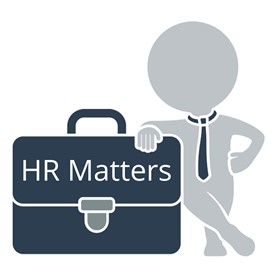 Phishing Scams
Phishing Scams
Post-Covid life has seen a dramatic increase in phishing scams and hacking by email, cell phone, public wi-fi use and unsecured browsers. Hackers can mask an email address and caller ID to trick the recipient into believing they have a non-existent subscription expiring, renewals are due or a refund is owed. Confirmation of a purchase (Amazon is popular), an alert for a suspicious login to social media and other accounts, including your bank account are popular as well. Recruiting phishing emails are also on the rise, advertising non-existent openings to obtain sensitive information.
Never open an email or text from an unknown sender. Do not click on any links or call a phone number for a representative. You should always search for the official site for the legitimate phone number for support and/or login to your own account to confirm activity. Once the Hacker convinces you or your employee to follow their directions; your financials, employee and customer records, and email accounts are at risk. These scammers are highly trained IT professionals and can transfer money from your bank account, change direct deposit accounts for payroll, see saved passwords and generate spam emails from your company. We recommend that employers have a Cyber Security conversation with all their employees.
Do not connect to public wi-fi. Use a secure browser for your internet needs. Lock and password your phone when not in use. Set up 2-factor authentication whenever possible. Go to your security settings for your Microsoft, Google and cell phone account and run the privacy/security checks. Consider using a VPN connection. Browse in incognito mode. Consider downloading Malware and Virus protection on your devices.
If it’s too good to be true, it probably is! Below are a few links related to phishing and security.
50 Phishing Stats You Should Know
5 Ways to Detect Phishing Email
Protect Your Cell Phone from Hackers
 COVID Corner
COVID Corner
Employers have observed an increasing lack of respect in the workplace, including so-called mask shaming—insulting colleagues who, out of concern over COVID-19, continue to wear masks.
Employees may continue to wear masks for a variety of reasons, Thomas noted, including:
- The pandemic’s continued existence, despite a drop in COVID-19 infections. “The sight of masks for some people is a reminder that the pandemic is not over, and some people are so anxious for this virus to be in the rearview mirror, they frankly get irritated when they are confronted by these literally in-your-face reminders that we are still in it,” Thomas said.
- Personal health reasons, including weakened immune systems.
- Personal experience as a COVID-19 survivor or COVID-19 long hauler coping with an array of persistent symptoms.
- Loss of friends and family members to COVID-19.
- Concern about family members with whom they live. If family members are not eligible for the vaccine—such as the very young, are undergoing cancer treatment or are immunocompromised, or are elderly—employees may be exceptionally careful to safeguard the members of their households.
It is recommended that employers integrate mask shaming as a form of bias in implicit bias and anti-harassment training initiatives by specifically including scenarios that include “mask bias” for discussion so employees understand expected standards of conduct.
Regardless of whether an employee’s protected status, such as age or disability, is the reason for continuing to wear a mask, employers should nip any mask shaming in the bud to avoid claims of actual or perceived unlawful discrimination or harassment. Workplaces increasingly have policies against bullying or harassment and even nonprotected forms of workplace harassment. Additionally, ensure that it becomes part of the onboarding process.
 Losing Employees?
Losing Employees?
You’re not alone! The most recent report on QUITTING indicates that some 4.35 million U.S. workers quit their jobs in February, up from the 4.25 million reported in January, according to the monthly JOLTS report released by the U.S. Bureau of Labor Statistics. Quitting has been especially high in retail, hospitality and business services, where demand has been strong and employment growing.
Employers have responded to the elevated quits levels with higher wages as they compete to attract talent, and that higher pay is luring workers away from their current jobs, experts said. In 2021, almost 48 million workers quit their jobs, the highest number on record, leaving their positions partly in response to increased opportunities in the labor market. There were 11.3 million job openings posted on the last day of February 2022, far more than the roughly 6.3 million people counted as unemployed.
How are you competing for the workers that have quit? Have you done a benefits and compensation review lately? Are you relevant? We can help!
 HR Metrics
HR Metrics
HR metrics, or human resources metrics, are key figures that help organizations track their human capital and measure how effective their human resources initiatives are. Examples of such data include turnover, cost-per-hire, benefits participation rate, and others. Measuring this kind of information—what’s working well, what needs improvement, and what trends to expect in the future—helps organizations figure out their people strategy.
- Absence Rate: The average number of days employees are absent in a given time period, not including approved PTO (also called absenteeism). This rate can be further refined by manager, position, or department, or broken out over time, e.g., per month or per quarter.
- Overtime Hours: The number of overtime hours worked by employees in a given time period. You can calculate the average number or break it down by individual employees.
- Turnover Rate: The number of employees who leave your organization within a given period of time, divided by the average number of total employees, then multiplied by 100 to provide a percentage. Turnover can be calculated for the entire organization, or broken down by department or manager.
- Voluntary Turnover Rate: The turnover rate calculated using only those employees who leave your organization voluntarily.
- Talent Turnover Rate: The rate of turnover among your organization’s highest-performing and/or highest-potential employees.
- Retention Rate: The opposite of your turnover rate, arrived at by dividing the number of employees who remain in your organization over a given period by the number of total employees.
- Demographics: The characteristics of your workforce such as age, gender, education level, and length of service.
- Time to Hire: The number of days between when a job is posted and when a candidate accepts your offer.
- Acceptance Rate: The number of offer letters your organization extends divided by the number of candidates who accept an offer.
- Cost per Hire: The cost of hiring a new employee. You can generate an average cost per hire by adding up internal and external recruiting costs for a defined date range, then dividing the total by the number of employees hired in that period.
- Time to Productivity: The time it takes for a new hire to become acclimated at your organization and start contributing at a normal productivity level.
- Ratio of HR Professionals to Employees: The number of employees in your organization per HR professional on your team.
- Cost of HR per Employee: The total amount your organization spends on HR functions divided by the total number of employees.
If you’d like assistance in reviewing the HR Metrics for your company, let us know.
 Unemployment
Unemployment
As of April 28th, states reported that 180,000 workers filed for new unemployment benefits during the week ending Apr. 23, reflecting an extremely tight labor market. New jobless claims have returned to pre-pandemic levels since the end of 2021 and have recently hovered near their lowest levels since the 1960s. Claims had totaled near 600,000 one year ago.
The number of workers continuing to claim unemployment benefits—1.4 million—is also well below its pre-pandemic average of 1.7 million.
 Where are they?
Where are they?
Where are all the employees going? According to one of the nation’s leading movers, the 2021 Atlas® Van Lines Migration Patterns Study found that 20 U.S. states were found to be balanced in nature, meaning the inbound and outbound moves were relatively equal. The data also showed that 12 U.S. states were classified as outbound, meaning more people moved out of the state rather than in, and 18 U.S. states were classified as inbound, meaning more people moved into the state rather than out. The data also reflected an increase in moves from 2020 to 2021. The company has conducted the annual study since 1993 tracking the nation’s interstate (between states), cross-border (U.S. to Canada only), and international (between countries) moves managed by Atlas®.
The 10 U.S. states with the highest percentage of inbound and outbound moves in 2021 are included in order below, with Maine ranking as the study’s inbound leader for the first-time following Idaho’s two-year run as the country’s inbound leader. New York was once again the country’s outbound move leader in 2021, a designation it has now held for three years running.
Holding its inbound status for a second consecutive year, Utah has earned a spot on the top inbound list for the first time. In 2021, Arkansas, Hawaii, Montana and Florida achieved inbound status for the first time since 2002, 2003, 2013 and 2016, respectively. Alternatively, California earned an outbound status for the second consecutive year, after holding a balanced status from 1995 to 2019. In addition to New York, states with a consistent presence on the leading outbound list include New Jersey, Louisiana, Indiana, Illinois and West Virginia.
| 2021 Top 10 Inbound Maine | 2021 Top 10 Outbound New York |
| North Carolina | Illinois |
| Arkansas | Louisiana |
| Tennessee | New Jersey |
| Utah | West Virginia |
| District of Columbia | Indiana |
| Idaho | California |
| Hawaii | Iowa |
| Montana | Connecticut |
| Florida | Ohio |